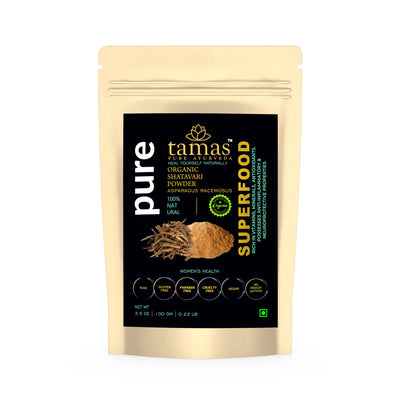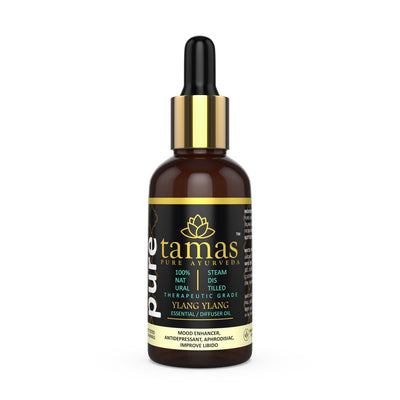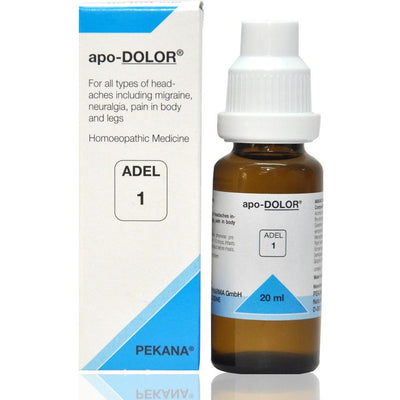
Rasnasapthakam Kwath Tablet
Text (Sarangadhara Samhitha)
Why Rasnasapthakam Kwath Tablet?
Rasnasaptakam Kwath is a tablet prepared out of herbal ingredients, which consist of water-soluble active principles. It contains Rasna and the other seven ingredients and hence named Rasnasapthakam Kwath. It is available as a dry coarse herb mixture, ready-made preparation and tablet.
Kerala Ayurveda's Rasnasapthakam Kwath Tablet is said to be beneficial in treating joint disorders and this ayurvedic antiinflammatory medicine for pain is also an anti-inflammatory and analgesic.
Additional benefits of Rasnasapthakam Kwath tablet include:
Inflammation refers to the body’s process of fighting against things that harm it, such as infections, injuries, and toxins, in an attempt to heal itself. When something threatens to damage the cells, the body releases chemicals that trigger a response from the immune system, and inflammation is part of that immune response. It is a process that depends both on the physical actions of white blood cells and the chemicals that they produce: antibodies, cytokines, and the like. This response includes the release of antibodies and proteins, as well as increased blood flow to the damaged area.
Inflammation is classified into two main types:
Acute inflammation usually occurs for a short (yet often severe) duration. It often resolves in two weeks or less and the symptoms appear quickly. This type of inflammation restores the body to its state before injury or illness and there are five symptoms that may be signs of an acute inflammation,
which are:
Redness
Examples of conditions that cause chronic inflammation include:
There are many factors that can lead to inflammation, including:
When inflammation occurs, chemicals from the body's white blood cells are released into the blood or affected tissues to protect the body from foreign substances. This release of chemicals increases the blood flow to the area of injury or infection and may result in redness and warmth. Some of the chemicals cause a leak of fluid into the tissues, resulting in swelling. This protective process may stimulate nerves and cause pain. The increased number of cells and inflammatory substances within the joint cause irritation, swelling of the joint lining and, eventually, wearing down of cartilage.
An Ayurvedic Perspective
Ayurveda means 'The Science of Life'. Ayurvedic knowledge originated in India more than 5,000 years ago stemming from the ancient Vedic culture. It was taught for many thousands of years in an oral tradition from accomplished masters to their disciples. Ayurveda identifies three basic types of energy or functional principles that are present in everyone and everything - vata, pitta and kapha. These principles can be related to the basic biology of the body. The cause of disease in Ayurveda is viewed as a lack of proper cellular function due to an excess or deficiency of vata, pitta or kapha. The disease can also be caused by the presence of toxins, known in Ayurvedic science as 'ama'.
In Ayurveda, the goal is to find the underlying source of a symptom and not only to treat the symptom itself. Inflammation can be due to any number of triggers from stress and trauma, the quality and choice of foods one eats, water intake, lifestyle and emotional state as well as sleep and exercise routine. Agni or the digestive fire is one of the principal forces in Ayurveda and it is an essential ingredient to good health. In the form of metabolism, it digests the food, generates life-sustaining energy, and incinerates waste. But when the metabolic fire burns too hot or flares up in the wrong places, it leads to chronic inflammation, and a host of other disorders arise.
According to Ayurvedic understanding, health is based on the balance of an individual's physiology (Doshas), digestive processes (Agni), tissues (Dhatus) and excretion (Malas). A person who knows how to balance their mind, body, and consciousness and maintain a state of balance is content and considered to be healthy. The Ayurvedic approach seeks to restore physical, mental, emotional, and spiritual balance, by using nutrition, yoga, meditation, breathing exercises, herbs, and supplements.
Text (Sarangadhara Samhitha)
Why Rasnasapthakam Kwath Tablet?
Rasnasaptakam Kwath is a tablet prepared out of herbal ingredients, which consist of water-soluble active principles. It contains Rasna and the other seven ingredients and hence named Rasnasapthakam Kwath. It is available as a dry coarse herb mixture, ready-made preparation and tablet.
Kerala Ayurveda's Rasnasapthakam Kwath Tablet is said to be beneficial in treating joint disorders and this ayurvedic antiinflammatory medicine for pain is also an anti-inflammatory and analgesic.
Additional benefits of Rasnasapthakam Kwath tablet include:
- It can help in balancing Vata and Kapha dosha.
- It is said to have analgesic and anti-inflammatory properties.
- It aids in the improvement of digestion.
- It is one of the prescriptions for pain relief and swelling in the body.
- It is herbal and has no known side-effects.
- It helps to support a healthy appetite, digestion, and elimination.
- Rasna Aplinia galanga
- Trikantaka (Gokshura) Tribulus terrestris
- Eranda Ricinus communis
- Amrita (Guduchi) Tinospora cordifolia
- Devadaru Cedrus deodara
- Punarnava Boerhavia diffusa (Rakta Punarnava)
- Aragvadha Cassia fistula
- Shunthi churna
Inflammation refers to the body’s process of fighting against things that harm it, such as infections, injuries, and toxins, in an attempt to heal itself. When something threatens to damage the cells, the body releases chemicals that trigger a response from the immune system, and inflammation is part of that immune response. It is a process that depends both on the physical actions of white blood cells and the chemicals that they produce: antibodies, cytokines, and the like. This response includes the release of antibodies and proteins, as well as increased blood flow to the damaged area.
Inflammation is classified into two main types:
Acute inflammation usually occurs for a short (yet often severe) duration. It often resolves in two weeks or less and the symptoms appear quickly. This type of inflammation restores the body to its state before injury or illness and there are five symptoms that may be signs of an acute inflammation,
which are:
Redness
- Heat
- Swelling
- Pain
- Loss of function
Examples of conditions that cause chronic inflammation include:
- Inflammatory arthritis, which covers a group of conditions distinguished by inflammation of joints and tissues (including rheumatoid arthritis, lupus, and psoriatic arthritis).
- Asthma, which causes inflammation of the air passages that carry oxygen to the lungs. Inflammation causes these airways to become narrow and breathing to become difficult.
- Periodontitis, which causes inflammation of gums and other supporting tooth structures. It is caused by bacteria triggered by local inflammation.
- Inflammatory bowel disease (IBD) refers to Crohn’s disease and ulcerative colitis. Both these conditions cause chronic inflammation in the gastrointestinal (GI) tract that eventually causes damage to the GI tract.
There are many factors that can lead to inflammation, including:
- Certain medications
- Exposure to irritants or foreign materials the body can’t easily eliminate
- Recurrent episodes of acute inflammation can also lead to a chronic inflammatory response.
- Pathogens (germs) like bacteria, viruses or fungi
- External injuries like scrapes or damage through foreign objects (for example a thorn in your finger)
- Effects of chemicals or radiation
When inflammation occurs, chemicals from the body's white blood cells are released into the blood or affected tissues to protect the body from foreign substances. This release of chemicals increases the blood flow to the area of injury or infection and may result in redness and warmth. Some of the chemicals cause a leak of fluid into the tissues, resulting in swelling. This protective process may stimulate nerves and cause pain. The increased number of cells and inflammatory substances within the joint cause irritation, swelling of the joint lining and, eventually, wearing down of cartilage.
An Ayurvedic Perspective
Ayurveda means 'The Science of Life'. Ayurvedic knowledge originated in India more than 5,000 years ago stemming from the ancient Vedic culture. It was taught for many thousands of years in an oral tradition from accomplished masters to their disciples. Ayurveda identifies three basic types of energy or functional principles that are present in everyone and everything - vata, pitta and kapha. These principles can be related to the basic biology of the body. The cause of disease in Ayurveda is viewed as a lack of proper cellular function due to an excess or deficiency of vata, pitta or kapha. The disease can also be caused by the presence of toxins, known in Ayurvedic science as 'ama'.
In Ayurveda, the goal is to find the underlying source of a symptom and not only to treat the symptom itself. Inflammation can be due to any number of triggers from stress and trauma, the quality and choice of foods one eats, water intake, lifestyle and emotional state as well as sleep and exercise routine. Agni or the digestive fire is one of the principal forces in Ayurveda and it is an essential ingredient to good health. In the form of metabolism, it digests the food, generates life-sustaining energy, and incinerates waste. But when the metabolic fire burns too hot or flares up in the wrong places, it leads to chronic inflammation, and a host of other disorders arise.
According to Ayurvedic understanding, health is based on the balance of an individual's physiology (Doshas), digestive processes (Agni), tissues (Dhatus) and excretion (Malas). A person who knows how to balance their mind, body, and consciousness and maintain a state of balance is content and considered to be healthy. The Ayurvedic approach seeks to restore physical, mental, emotional, and spiritual balance, by using nutrition, yoga, meditation, breathing exercises, herbs, and supplements.
You may also like
More from Kerala Ayurveda
More from Aasaan
Recently viewed

















